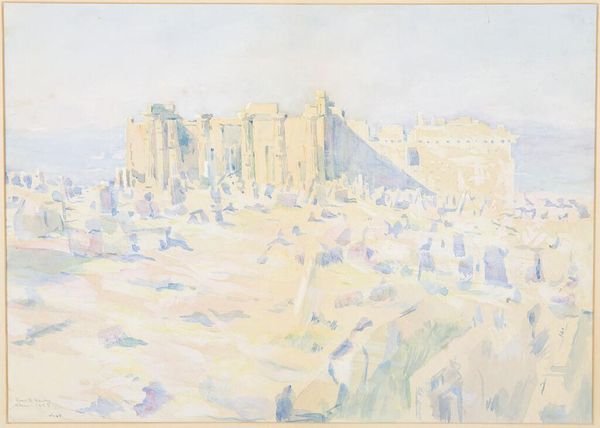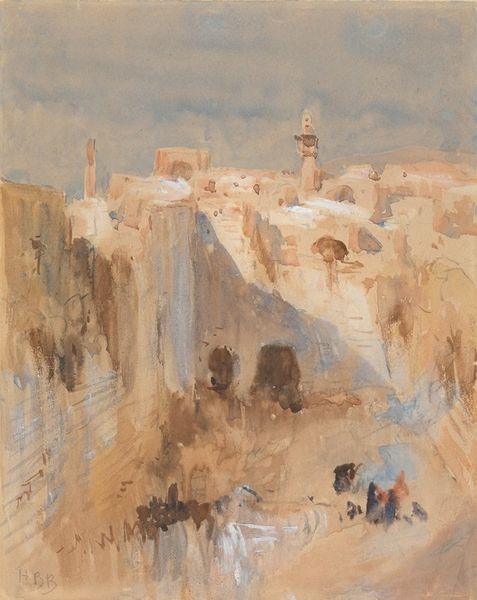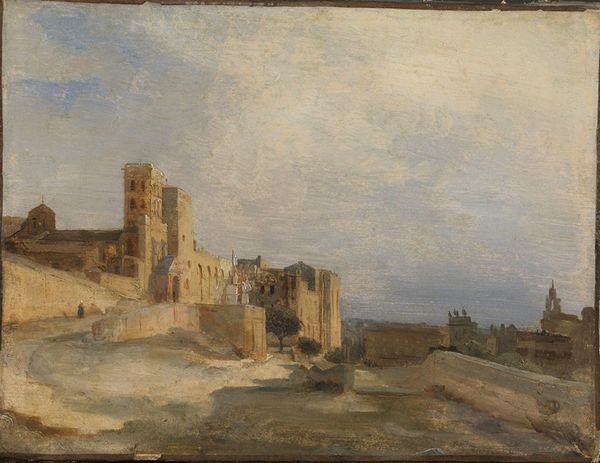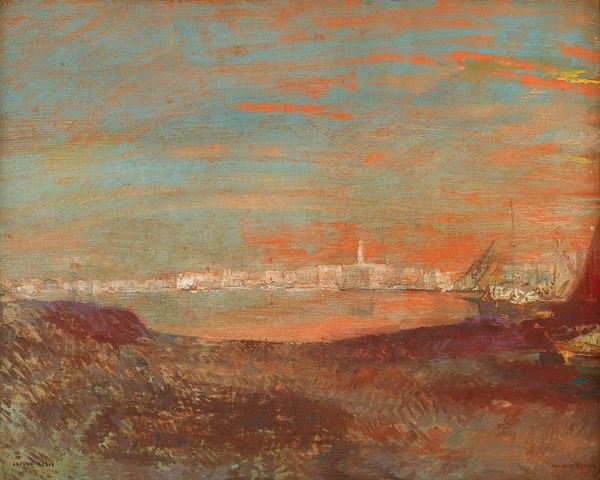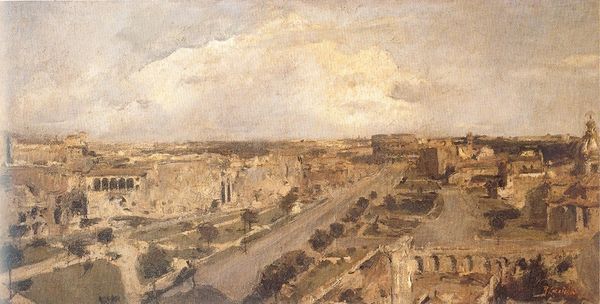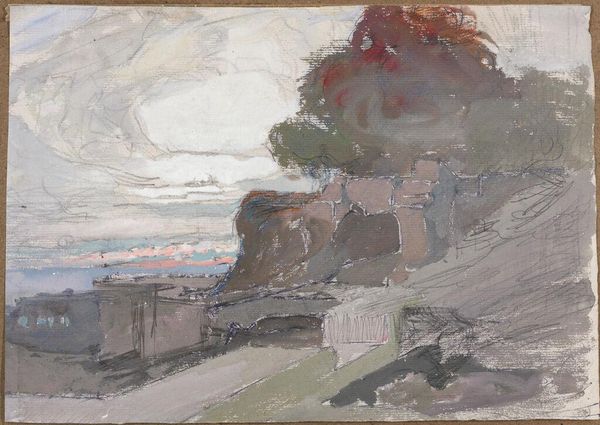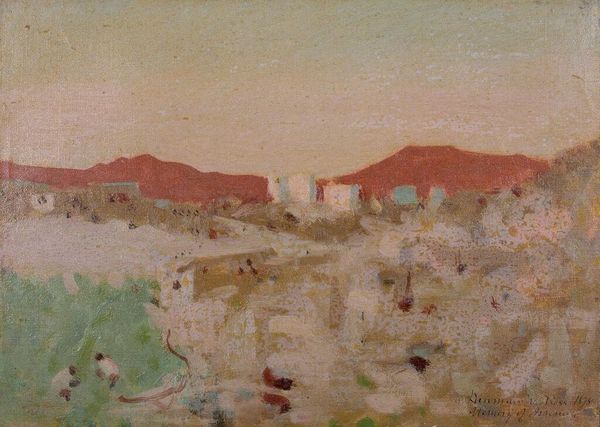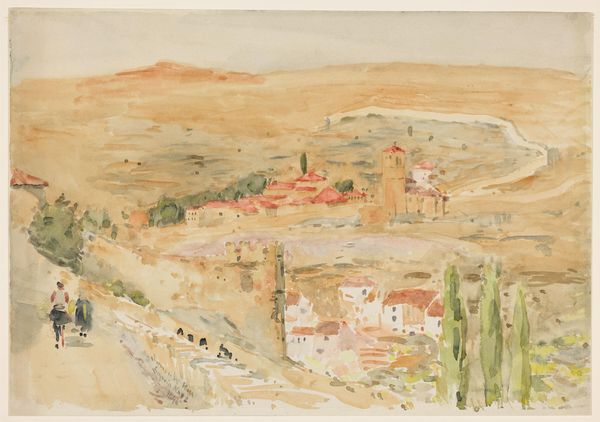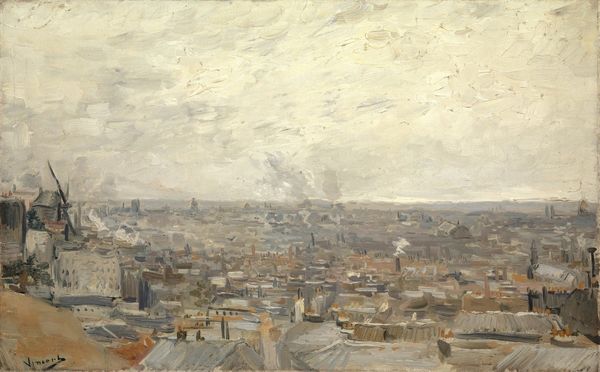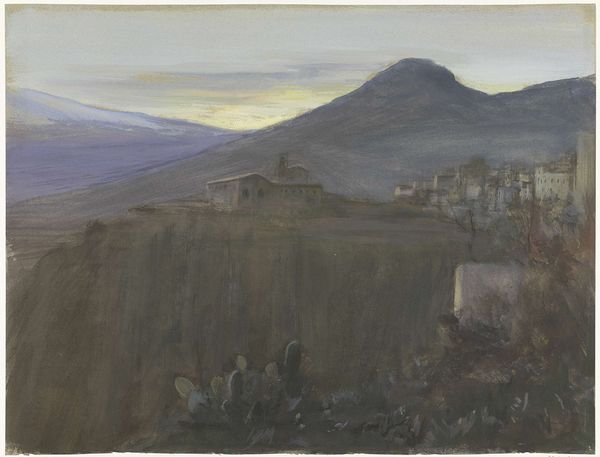
plein-air, watercolor
#
impressionism
#
plein-air
#
landscape
#
watercolor
#
painterly
#
cityscape
#
watercolor
Copyright: Public Domain: Artvee
Editor: We are looking at "A Campanile among Ruins," a watercolor by Hercules Brabazon Brabazon. It's interesting how muted the tones are; it almost feels like a faded memory of a landscape. What stands out to you? Curator: I observe the artist's confident, yet economical use of watercolor. Brabazon expertly captures the light and form with what appears to be minimal brushstrokes, a hallmark of plein-air Impressionism. The tower is structurally prominent, a clear vertical thrust set against horizontal blocks. Editor: The horizontal blocks you mentioned; the painting has got these horizontal layers or bands...What does that do to the space in the image, how it feels to look at this work? Curator: Indeed, the horizontal bands - the foreground textures, the architectural plane, the distant hills and sky - divide the space and create a layered, almost stratified composition. Note how he juxtaposes rough texture against the tower's smoothness. Brabazon has manipulated form using a restricted chromatic range. Observe, in particular, the modulation within the ochre of the tower. Editor: It's subtle but, as you said, it adds form to this very, almost ghostly building. Is there an emotional aspect in this formal decision, I mean the layering? Curator: The stratification may very well be designed to evoke a sense of historical depth, perhaps mirroring how time leaves its mark upon landscape. The "ruins" invite an interpretative understanding of cyclical phenomena as presence and loss. Editor: It's all in the composition... That makes a lot of sense now. Thank you! Curator: A keen eye helps us unveil the ways that artists transform ideas into aesthetically salient visual artifacts.
Comments
No comments
Be the first to comment and join the conversation on the ultimate creative platform.
